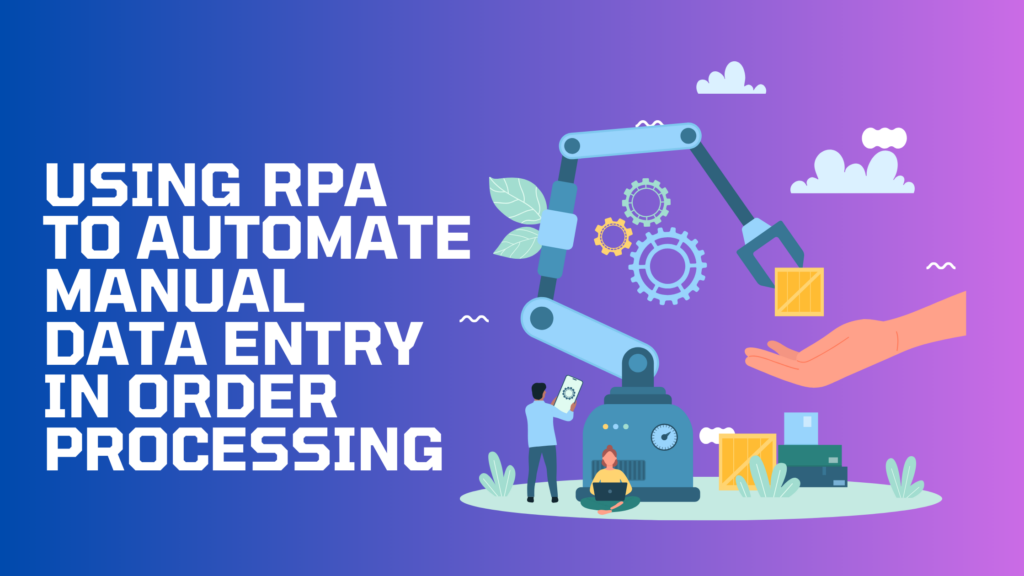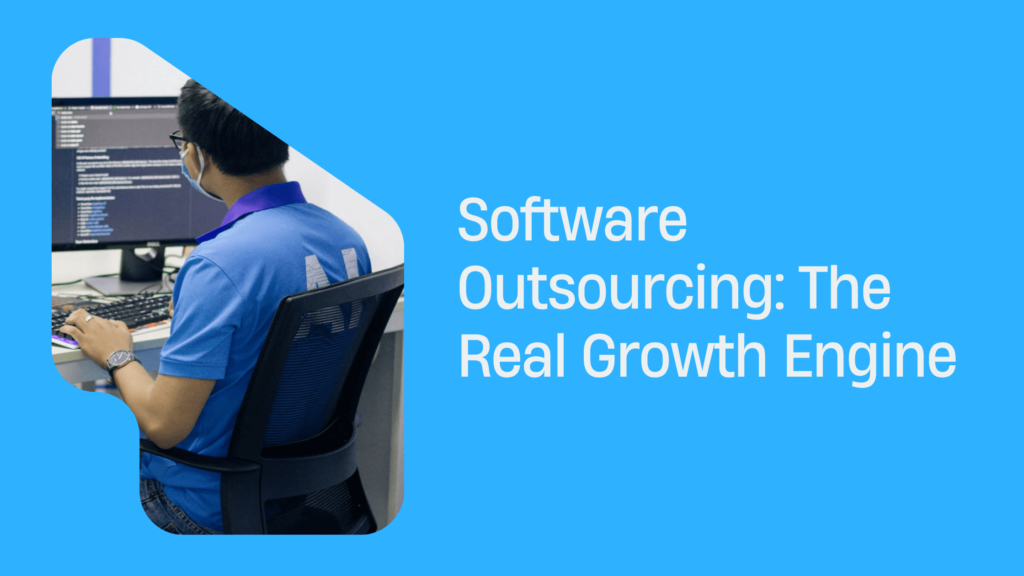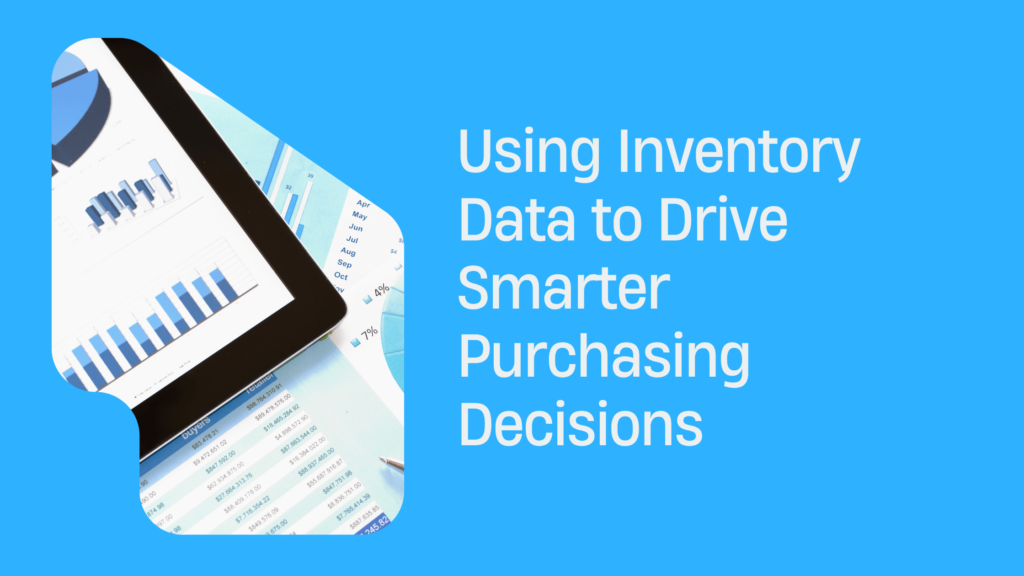Using RPA to Automate Manual Data Entry in Order Processing
The ability to streamline processes and automate repetitive tasks has become a critical factor in staying ahead of the competition. Robotic Process Automation (RPA) has emerged as a game-changing technology that revolutionizes the way order processing is handled. By mimicking human actions, RPA software can automate manual data entry tasks, saving time, enhancing accuracy, and improving overall efficiency. In this blog, we will explore how RPA is transforming the order processing industry and discuss the benefits it offers to businesses.
Issues Faced
The order processing industry, long burdened by inefficiencies and complexities, has found a powerful ally in Robotic Process Automation (RPA). By automating routine tasks and tackling inherent challenges, RPA streamlines workflow and minimizes errors, revolutionizing the way orders are handled.
Historically, two major roadblocks plagued the industry:
- Manual Purchase Order Processing: Manually handling purchase orders was not only time-consuming but also susceptible to errors. Staff often dedicated significant effort to deciphering instructions, verifying order information, and reconciling discrepancies between orders and shipping addresses. This tedious process typically took 20-30 minutes per order, significantly impacting overall efficiency.
- Non-Standardized Data: Inconsistent data formats within order information further compounded the problem. Manually comparing and correcting data across various documents added another layer of complexity and delay to the process.
RPA emerged as the much-needed solution, effectively addressing these pain points and automating a spectrum of order processing tasks. By replicating human actions within software, RPA eliminates the need for manual intervention, dramatically increasing speed and accuracy. This transformative technology unlocks a new era of efficiency and reliability in the order processing industry.
Understanding RPA in Order Processing
RPA, also known as Robotic Process Automation, is a cutting-edge technology that utilizes software robots to perform repetitive and rule-based tasks. These “robots” are not physical entities but rather software programs that work seamlessly with existing business applications. They are capable of collecting and comparing data from different systems, processing orders, adjusting insurance claims, and performing any predictable and repeatable task.
Traditionally, order processing involved manual data entry, which was time-consuming and prone to errors. RPA has completely transformed this process by automating order processing and resolving the difficulties and loopholes commonly associated with it. Let’s take a closer look at how RPA is revolutionizing order processing.
Time-saving Automation
One of the significant advantages of RPA in order processing is its ability to save time. RPA robots work behind the scenes, verifying orders, extracting data from multiple systems, and checking billing and delivery addresses, all within a matter of seconds. They also ensure that duplicate orders are identified and resolved promptly. This automation drastically reduces the time required to process orders, from an average of 20-30 minutes to mere seconds. The increased speed and accuracy provided by RPA allow businesses to handle a higher volume of orders efficiently.
Handling Complex Workflows with Ease
Order processing can become complex, especially during peak periods or when dealing with a high volume of orders. In the past, staff members had to navigate between multiple systems, a process known as “swivel-seating,” which often resulted in delays and errors. RPA simplifies complex workflows by seamlessly integrating with various systems and applications, eliminating the need for manual intervention. With RPA, businesses can handle complex workflows effortlessly, ensuring smooth order fulfillment and customer satisfaction.
Round-the-Clock Operational Feasibility
RPA brings round-the-clock operational feasibility to order processing. Unlike human employees who require breaks and sleep, RPA software can work continuously, making 24/7 operations feasible. The speed at which RPA performs tasks surpasses human capabilities, reducing cycle times, improving accuracy, and enhancing overall throughput. By leveraging RPA, businesses can ensure their order processing operations run seamlessly without any interruptions.
Unparalleled Flexibility
Flexibility is a key benefit offered by RPA in order processing. Once the process and instructions for the robot software are defined, businesses can schedule operations at any time. Furthermore, multiple robots can be deployed to work on a project simultaneously, enabling businesses to handle large volumes of orders efficiently. In case of an influx of other critical processes, tasks can be easily reassigned to robots, allowing for seamless multitasking. The flexibility provided by RPA empowers businesses to adapt to changing demands and optimize their order processing operations.
High Returns on Investment
Implementing RPA in order processing offers significant financial benefits to businesses. While the cost of RPA software may seem expensive initially, it pales in comparison to the expenses associated with hiring additional employees to manage manual order processing. Human errors can be costly, leading to order rework and customer dissatisfaction. According to a report by Deloitte, the operating costs of a robot are much lower than maintaining a full-time labor force, making RPA a cost-effective solution. Additionally, the improved quality of service delivered through RPA enhances customer satisfaction and loyalty.
Enhanced Data Security
As businesses embrace automation, data security becomes a paramount concern. RPA addresses this concern by ensuring data protection and cyber security measures are in place. The software can be configured to comply with industry regulations and implement stringent security protocols, with network security solutions playing a key role in safeguarding automated processes.
With RPA, tasks like order entry, invoice processing, inventory management, and shipping updates can be done faster and with fewer errors. Some companies choose to hire RPA developers when they need more advanced or custom automation. Enhancing cybersecurity compliance through tools like request for proposal cybersecurity templates ensures data protection and supports seamless integration of advanced technologies like RPA. As businesses use RPA to streamline tasks, it remains critical to establish robust processes for protecting sensitive information. Templates can be pivotal in addressing these concerns during procurement.
Integrating RPA with SIEM tools provides real-time monitoring, threat detection, and incident response. Suspicious activities can be identified before they escalate into major breaches.
The Future of Order Processing Automation
The benefits of RPA in order processing are undeniable. As businesses strive for efficiency and seek ways to optimize their operations, RPA presents a transformative solution. While the current application of RPA in order processing is primarily rule-based, the technology is poised to push boundaries and adapt to diverse needs. The future of RPA holds the promise of further advancements and opportunities.
While the adoption of RPA in order processing brings undeniable benefits, businesses must address certain considerations during implementation. Data protection and cyber security should be taken seriously to safeguard sensitive customer information. Additionally, businesses must ensure that all aspects of implementation, including people, technology, and processes, are well-planned and executed.
Conclusion
In conclusion, RPA is revolutionizing the order processing industry, offering businesses a powerful tool to streamline operations, improve efficiency, and enhance customer satisfaction. By automating manual data entry tasks, RPA eliminates errors, saves time, and allows businesses to handle complex workflows seamlessly. The 24/7 operational feasibility and flexibility provided by RPA empower businesses to adapt to changing demands and optimize their order processing operations.
Furthermore, RPA delivers high returns on investment by reducing costs associated with manual order processing and improving the quality of service delivered. As businesses embrace RPA, they must prioritize data security and ensure a comprehensive implementation strategy. The future of order processing automation holds immense potential, promising increased efficiency and new opportunities for businesses willing to embrace this transformative technology.





